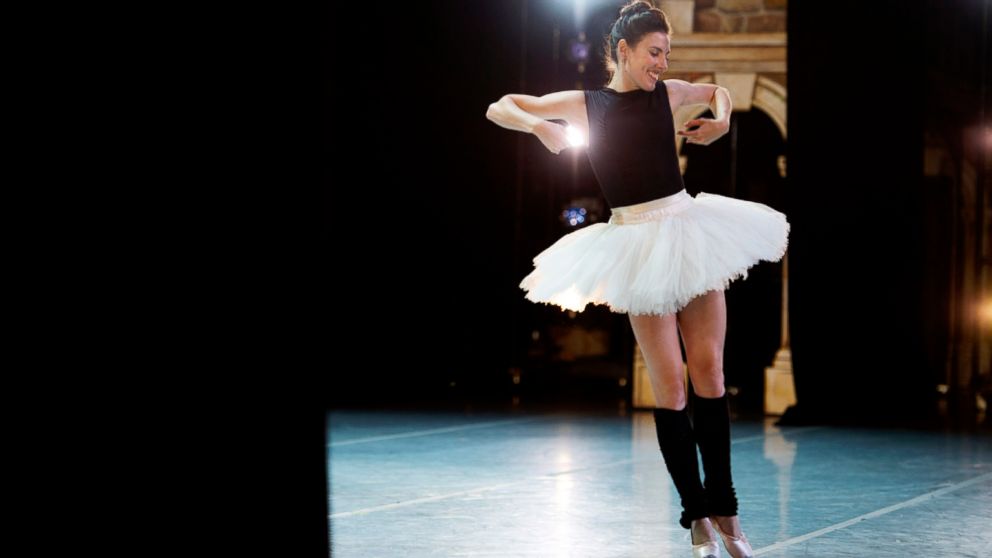
Journalist and former ballet and modern dancer Kristin Schwab interviewed New York City Ballet principal Tiler Peck for espnW about Peck's career and becoming the first woman ever to direct the BalletNOW program. This story originally appeared on espnW.com. Disney is the parent company of ESPN and “Good Morning America.”
New York City Ballet principal Tiler Peck is revered for her musicality. Even at a fast tempo, she finds a way to stretch time and luxuriate in the steps. But in "Ballet Now," a documentary directed by Steven Cantor, executive produced by Elisabeth Moss and produced by Paul G. Allen's Vulcan Productions, Peck can't seem to find enough hours in the day.
She's in Los Angeles directing the Music Center's BalletNOW program, which means she's in charge of curation, staging and music, on top of dancing many ballets in one evening. Oh, and she's the first woman ever to direct the program, too.
In numbers, women dominate ballet's stages, but men overwhelmingly land leadership roles as directors and choreographers. It influences programming, music and casting. And that trickles into the studio, affecting how male and female dancers work and relate to each other and their superiors.
In "Ballet Now," currently streaming on Hulu, we see a shift in Peck's leadership confidence as she piles on and plies into more responsibility. Even her characteristically calm voice takes a more authoritative tone as the clock ticks down to performance time. Recently, journalist and former ballet and modern dancer, Kristin Schwab, talked to Peck for espnW about this turning point in her career and what it means for her future.
Q: How did the idea of directing the BalletNOW program in L.A. come about?
A: The president and CEO of the Music Center, Rachel Moore, asked me how I would feel about curating her trademark program. Then she mentioned that I would be the first woman to do so [since its 2015 inception]. My first thought was this is in California, my home, and what a huge honor that would be. It made me want to step out of my comfort zone. Honestly, I never thought I was capable until I was.
Q: There was classical and contemporary ballet in the program, but also tap, hip-hop and even clowning. What was your vision?
A: I wanted to expand ballet. For me, when I was younger, ballet was my least favorite. You dance to classical music -- that's not as fun. The hard work that goes into ballet is not ideal when you're younger. But being a ballerina doesn't just mean pink tights and a tutu -- today a ballerina is asked to do much, much more.
Q: How did your experiences morph into a documentary?
A: "Ballet Now" was a space to show the behind-the-scenes of what people don't get to see. Ballet as an art form is super glamorous, and everybody thinks it's beautiful. But I think this documentary shows what it takes to get us to the level to perform like a top athlete. Dancing in pointe shoes is taxing. And we have to take the hard work and pain and make it look like it's the easiest thing. The film helps people relate to ballerinas.
Q: You were the first woman to direct this program. Do you see many women holding roles as decision-makers in ballet?
A: George Balanchine, [the now departed] founder of the New York City Ballet, is known for saying "Ballet is woman," so it's not that we aren't appreciated. But leadership positions have always been very male-dominated, and [from my experience] most choreographers are men.
As a ballerina you're told what to do in a studio by a choreographer. Ballet dancers aren't vocal because they're used to communicating through dance. The older I get, the more I speak up. I got into the company when I was 15, and I wanted to do everything by the books. I'm 29 now, and I'm not as afraid to stand up for myself.
Being a ballerina is demanding, time-wise. Women often dance in several ballets a night and men have a little more time to do things like choreography. For me, to be performing at a top level, I had to focus on dancing.
Q: Are there more leadership roles in your future?
A: I'm choreographing my first piece for the Vail Dance Festival (in Colorado July 28-Aug. 11). There are three dancers in it. It's very young and fresh, and the music was composed for me by a friend who is a musical composer for Broadway.
This is such a fantastic time for me at the New York City Ballet. When you're younger, you have the technique and not the artistry. When you're older, you start to lose the technique, but your artistry grows. I feel like I'm in this sweet spot where your technique and artistry match. If the opportunity to direct arose, I would 100 percent do it again.
Kristin Schwab makes podcasts for The Wall Street Journal. She's also reported for Marketplace, NPR, The Guardian and Dance Magazine. Follow her on Twitter: @kkschwab.